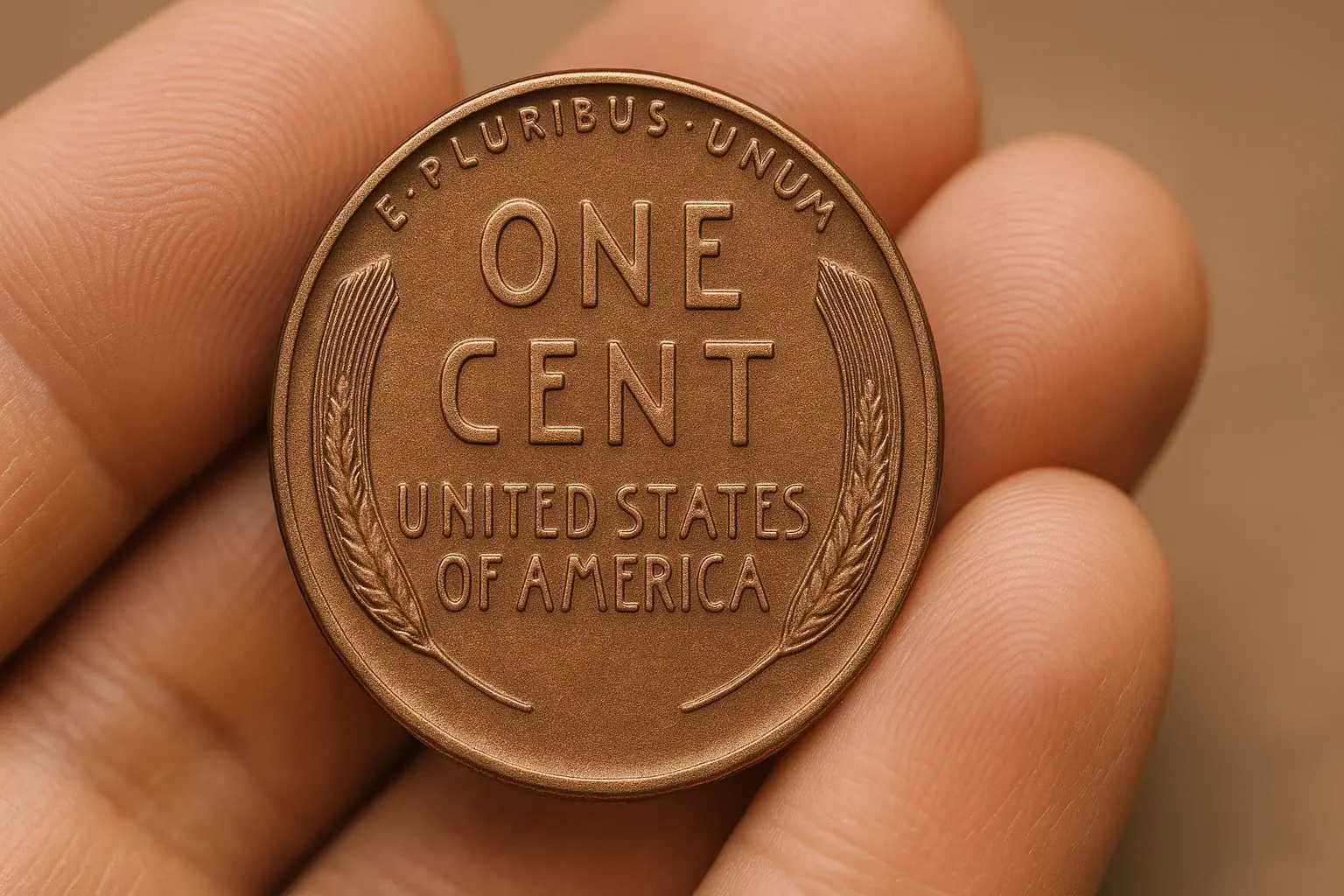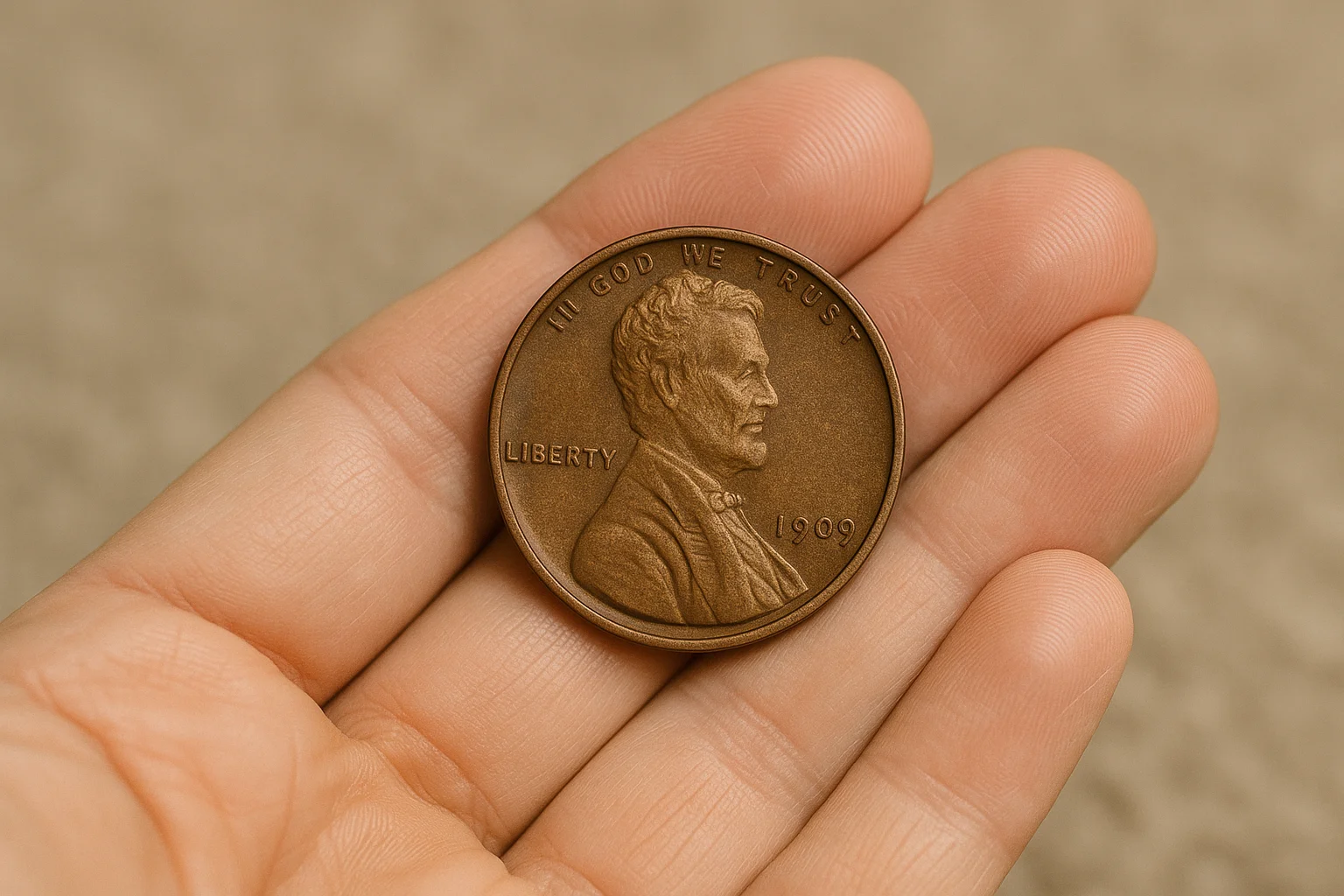Lincoln Wheat Penny Explained: From A to Z
.Ordinary and rare Wheat pennies get their name from the two stylized wheat ears engraved on the reverse (back) side of the coin. This design, created by Victor David Brenner, was used on U.S. one-cent coins from 1909 to 1958.
The wheat ears flank the denomination “ONE CENT” and the inscription “UNITED STATES OF AMERICA,” symbolizing prosperity and the nation’s agricultural heritage. When the reverse design changed in 1959 to the Lincoln Memorial, collectors began referring to the earlier coins as “Wheat cents” or “Wheat pennies” to distinguish them.
Historical Background
It was introduced in 1909 to mark the 100th anniversary of Abraham Lincoln’s birth. It replaced the Indian Head cent and was the first regular-issue U.S. coin to feature a real person rather than a symbolic Liberty figure. President Theodore Roosevelt, who wanted American coinage to have more artistic merit, personally supported placing Lincoln on the cent as a tribute to his legacy.
The U.S. Mint commissioned sculptor Victor David Brenner for the design after Roosevelt saw his earlier medallion of Lincoln. Brenner’s design combined a realistic portrait on the obverse with a reverse featuring two wheat ears framing the denomination, symbolizing prosperity and the nation’s agricultural foundation. The first 1909 coins bore his initials “VDB” prominently at the bottom of the reverse, which sparked public criticism; the initials were quickly removed and later reintroduced in smaller form on Lincoln’s shoulder in 1918.

The Wheat cent was struck from 1909 to 1958, covering nearly five decades of U.S. history, including both World Wars, the Great Depression, and major shifts in minting technology. Composition changed only once during this period—in 1943, when copper was diverted for the war effort and cents were struck in zinc-coated steel, creating the famous “steel pennies.”
By 1959, the U.S. Mint replaced the wheat reverse with the Lincoln Memorial design to celebrate Lincoln’s 150th birthday. Today, Wheat pennies remain one of the most collected U.S. coin series.
Design
Obverse (front):
Designed by Victor David Brenner, it features a detailed right-facing portrait of Abraham Lincoln. The inscriptions include “IN GOD WE TRUST” arching across the top, “LIBERTY” to the left of Lincoln’s profile, and the year of mintage to the right. The mint mark (if present) appears just below the date. Brenner’s initials “VDB” appeared prominently at the bottom of the reverse in the first 1909 issues but were removed that same year due to public criticism; they returned in smaller form on Lincoln’s shoulder in 1918.
Reverse (back):
The central element is the denomination “ONE CENT” in large lettering, with “UNITED STATES OF AMERICA” directly beneath it. Two tall, curved ears of durum wheat rise along the left and right edges, framing the text. Above is the motto “E·PLURIBUS·UNUM” (Latin for “Out of many, one”), spaced with centered dots between the words. The wheat stalks were chosen as a nod to America’s agricultural roots and to convey ideas of growth, abundance, and stability.
Rare Specimens
Some Wheat pennies are worth far more than face value because they combine low mintages, unique varieties, and striking mint errors. These standout pieces have become special in U.S. numismatics and continue to attract strong demand.
Key Rare Wheat Pennies
1909-S VDB – First year of the Lincoln cent with designer Victor David Brenner’s initials prominently displayed. Only 484,000 minted in San Francisco, making it one of the most famous American coins.
1914-D – Struck in Denver with just over 1.1 million produced, it is the second-lowest mintage Wheat penny and extremely hard to find in high grades.
1922 “No D” Strong Reverse – A Denver-only issue where some dies lost the mint mark due to over-polishing or wear. True “strong reverse” examples are rare and command high premiums.
1931-S – Minted during the Great Depression, with a low output of 866,000 coins. Even circulated examples are desirable.
Famous Error Wheat Pennies
1943 Bronze (Copper) Cent – Accidentally struck on leftover bronze planchets instead of the wartime steel composition. Only about 20–30 confirmed exist, with values easily exceeding six figures.
1944 Steel Cent – Created when leftover 1943 steel planchets were fed into presses in 1944. Very few survive, and they can also bring six-figure prices.
1955 Doubled Die Obverse – Known for dramatic doubling of the date and inscriptions “LIBERTY” and “IN GOD WE TRUST.” Strong examples are highly collectible and expensive.
Why These Coins Are So Coveted
Low survival rates – Even if mintages were modest, many coins were lost or heavily worn in circulation.
Historic significance – They reflect major events like Lincoln’s centennial, the Great Depression, and World War II.
Visual appeal – Varieties like the 1955 doubled die are striking enough to see without magnification.
Proven value growth – Auction records show steady appreciation, especially for top-grade certified examples.

How to Identify Them
Here are practical tips for identifying valuable Wheat pennies so you can quickly separate common pieces from high-value finds.
1. Start with the Date and Mint Mark
Check the year first—key rarities often come from specific dates like 1909-S VDB, 1914-D, 1922 No D, 1931-S, 1943 bronze, 1944 steel, and 1955 doubled die.
Look just below the date for the mint mark:
P – Philadelphia (no mark before 2017 for cents)
D – Denver
S – San Francisco
Certain date/mint mark combinations are far scarcer than others.
2. Use Magnification
A 10× jeweler’s loupe or digital microscope helps you spot fine details.
Look for doubled letters, repunched mint marks, or die cracks that can add value.
3. Know the Key Varieties
Doubled dies: Strong doubling in date or inscriptions.
Overmintmarks: One mint mark stamped over another (e.g., 1946-S over D).
Wrong planchet errors: Copper cents in 1943, steel cents in 1944.
4. Evaluate Condition
Higher grades bring much higher prices, especially in AU (About Uncirculated) and MS (Mint State).
Check for sharpness in Lincoln’s hair, wheat stalk lines, and lettering.
5. Compare with Trusted References
Use PCGS CoinFacts, NGC VarietyPlus, or a current Red Book for images and mintage numbers.
Compare your coin directly to verified photos of known varieties.
6. When in Doubt, Get Certification
If a coin matches a rare date, variety, or error, have it authenticated by PCGS or NGC before selling.
Certification protects against counterfeits and boosts resale value.
Conclusion
When collecting Wheat pennies, focusing on authentic key dates and varieties is the best way to build both value and historical significance into your collection. The 1909-S VDB, 1914-D, 1922 No D, 1943 bronze, 1944 steel, and 1955 doubled die remain the most coveted pieces, with proven records of price growth.
For grading, aim for:
Key dates – Target VF (Very Fine) or higher for affordability, but AU (About Uncirculated) to MS (Mint State) for long-term value growth.
Errors and rare varieties – Even in lower grades, they are valuable, but MS63+ examples command strong premiums.
Common dates – Only worth grading if in exceptional condition (MS66–MS67) or with unique errors.
Certification by PCGS or NGC is recommended for all high-value Wheat pennies. Professional grading protects authenticity, preserves condition, and ensures the coin’s marketability when it’s time to sell.
